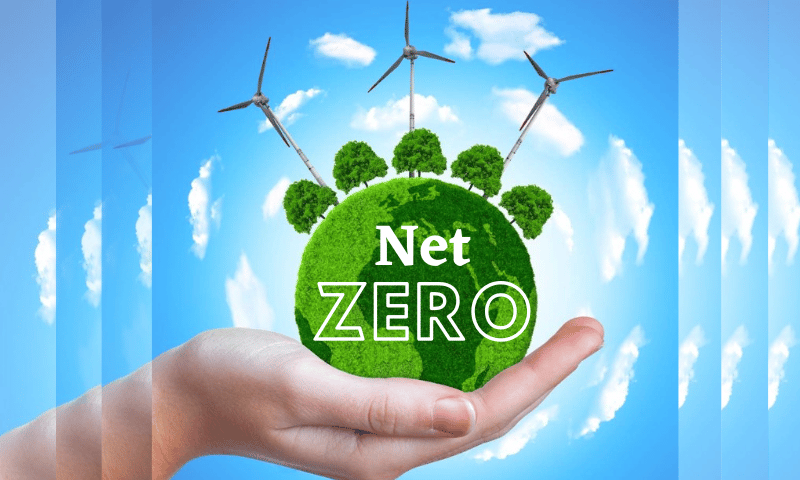In Short : Deutsche Bank has been actively involved in helping companies finance their path to net-zero by offering a range of sustainable finance solutions. The bank has implemented various initiatives and strategies to support corporate clients in transitioning to a low-carbon economy.
In Detail : Earth Overshoot Day is the date when humanity’s demand for ecological resources in a given year exceeds what Earth can regenerate in that year. The first-ever overshoot took place on December 29, 1970. Since then, every year the date occurs earlier. This year, it was on August 1st.
“Taking planetary boundaries into account means that meeting the four key human demands —energy, food, manufacturing, and mobility—will require fundamental system changes,” said Jörg Eigendorf, Chief Sustainability Officer.
Mankind’s desire to fulfill the four basic needs has created our current economic system. In the past, corporations responded to demands by increasing supply – with little consideration for the impact on natural capital. As a result, the complex corporate and economic structures now in place are increasingly inappropriate.
“These supply structures cannot be dismantled immediately, because governments are not willing to risk meeting the demands of the population,” said Eigendorf. “Hence, the emphasis must be on changing the way we meet the demands. We need to decouple economic activity as much as possible from emissions and environmental destruction. The external cost of doing business needs to be internalized to set the right price signals and encourage innovation.”
Investing effectively – the ESG factors
The global approach to environmental, social, and governance (ESG) issues has been to set broad targets such as limiting global temperature gains. Effective ESG investment and financing, however, requires going beyond targets and thinking in more depth about the required system changes.
Deutsche Bank created its own transition plan which details pathways for high emitting sectors. The plan consolidates Deutsche Bank’s definitions, methodologies, targets, and achievements on its path to net-zero by 2050 and focuses on three dimensions of decarbonization: the bank’s own operations, its supply chain, and financing provided to clients.
The Transition Plan
“Our plan details what clients and the public can expect from us in our role in decarbonizing the economy,” Eigendorf explained. “As the economy progresses toward net-zero, regulations, reporting standards, and the role of the banking industry will evolve, allowing us to continuously refine the plan.”
Deutsche Bank has a three-pronged approach to implementing its plan. It includes financing the development and scaling-up of clean energy technologies, engaging with high-emitting clients to support and finance their transition, and steadily phasing out business with not-to-abate industries as well as with clients not willing to align to the bank’s transition pathway.
Deutsche Bank initially identified four high-emitting sectors requiring substantial changes on their transformational journeys: oil and gas, energy, automotive, and steel. It subsequently added three more sectors including cement, coal mining, and shipping. The bank is working with clients in these sectors to define, finance, and execute their transitions.
The bank has an ambitious goal. When it comes to new corporate lending transactions for high-emitting clients in the most carbon-intensive sectors, at least 90% of them shall have a net-zero commitment in place from 2026 onward.
“Sustainability is not something you can just kickstart from scratch,” said Eigendorf. “It’s like a muscle that needs to be trained. The good thing is that most of our clients are already on the right path. Our role is to support them o their path.”
Deutsche Bank’s ESG strategy includes having a dedicated ESG teams in each business unit to help clients achieve net-zero commitments. The teams in the Corporate Bank and the Investment Bank have a detailed action plan that begins with a thorough footprint analysis followed by an assessment of transition strategies.
Next, a series of dialogues address data gaps, identify support opportunities, and next steps. Finally, the Deutsche Bank teams monitor progress and conduct regular reviews to ensure the transition is proceeding smoothly.
The role of tech
The entire process relies on tight data integration and management.
“One of the workstreams we are managing cross divisionally as part of our sustainability strategy implementation is data and technology, and it’s by far the largest,” said Eigendorf. “We dedicate many resources to integrate sustainability into our business processes through our technology landscape. It’s an ongoing process which started with using Microsoft Excel sheets as leading tech companies like SAP developed their offerings.”
According to Eigendorf, the main challenge is linking incoming client data automatically to the reference system within the bank. Banks as well as industrial companies need to have front-end reporting, which leads to the question of how and when to implement AI.
“There’s a lot of data in all those transition plans,” he said. “AI can help us collect it and even conduct a first client assessment. AI can save us a lot of time and resources and to focus on the material issues. It can help us interpret the data immediately.”
Eigendorf is pleased by Deutsche Bank’s progress on its sustainability journey.
“Today we not only understand the system changes needed to provide people with energy, food, manufacturing, and mobility; we are actually working with customers within the system to drive the changes,” he said. “These collaborations are improving day by day.”
Insights and learnings from these collaborations are also the focus of Deutsche Bank activities at COP 28 in Dubai. By putting their own lens on how to decarbonize industries, Deutsche Bank wants to showcase what German companies already have to offer regarding decarbonization—and what can be expected from them beyond German borders.

